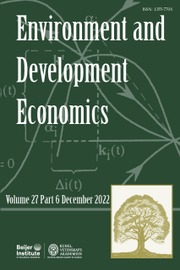No CrossRef data available.
Article contents
A simple indicator for climate-related transition risks of bank lending
Published online by Cambridge University Press: 17 February 2025
Abstract
We propose a simple indicator for the climate-related transition risks of bank lending based on transaction-level loan data. The underlying idea is that the higher the greenhouse gas intensity of an economic activity, and thus that of the debtor involved, the higher its transition risk. The relationship is mapped through two min-max-normalised functions, each of which represents a scenario for the future characteristics of the green transition. The concept is versatile and applicable to different dimensions at different levels of aggregation (banking system or individual banks, whole economy or specific sectors). As a practical example, we discuss the proposed indicator using Hungarian data for the period 2012–2020.
JEL classification
- Type
- Research Article
- Information
- Copyright
- Copyright © The Author(s), 2025. Published by Cambridge University Press


